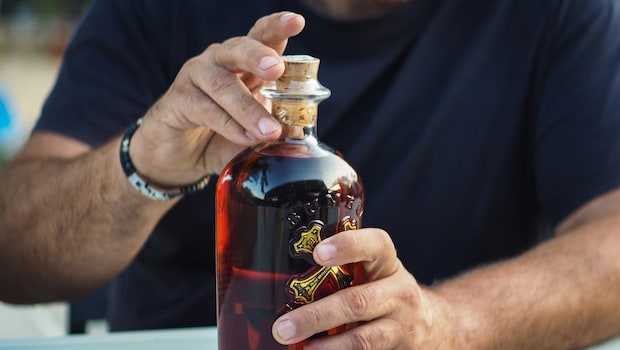Two decades ago, the idea of India emerging as a serious contender in the premium rum space would have raised eyebrows. But in 2025, it is raising glasses. From age-old sugarcane traditions to sophisticated contemporary distillation methods, India as new wave of cane juice rums is not only gaining attention but also changing perceptions. Historically, most industrial rums have been produced from molasses, a byproduct of the sugar-making process. Cane juice rum, however, comes directly from fresh-pressed sugarcane juice, making all the difference. This spirit carries the signature of its origin, what French distillers refer to as terroir. It was in Martinique and Guadeloupe, regions where sugar prices fell and cane fields stayed, that rum agricole emerged, preserving tradition and locality in a single pour.
Also Read: How Old Monk Became One Of India's Most Beloved Rum And Why It Still Reigns
Rum typically falls into three stylistic categories:
- Molasses-based rums (often column-distilled)
- Grassy and aromatic cane juice rums
- Pot-stilled expressions with deep complexity.

Photo Credit: Unsplash
But more important than the production method is provenance. Just as Scotch evokes the Highlands, bourbon reflects Kentucky, and tequila speaks of Jalisco, rum needs territorial identity - flavour informed by climate, soil, and crop.
India, with its unmatched legacy in sugarcane cultivation, stands poised to offer just that. The Sanskrit word sharkara, meaning sugar, is the root of many global terms for sweetness. Archaeological evidence shows that India has been growing sugarcane for over 5,000 years. Yet for most of its modern history, this crop has fuelled jaggery, crystal sugar, and mass-market molasses rums, not premium spirits.
Today, the emergence of cane juice rum signals a full-circle return to roots. Fermenting fresh cane juice taps into natural bacteria and wild yeast, crafting nuanced flavours that reflect the local environment. Even when applying familiar techniques from the Caribbean or French West Indies, rum made in India retains its own distinctive identity - and that is its advantage.
Indian cane juice rums typically offer a balanced profile. Think soft spice layered over gentle wood notes, a hint of vanilla on the nose, and a clean, peppery finish. These are not blunt instruments of sweetness, they are complex, subtle and assertive, making them ideal for modern cocktails. Crucially, they serve as the centrepiece, not just the base.
Yet rum in India still wrestles with seasonal stereotypes. It has long been pegged as a winter drink - a warming indulgence for chilly nights. Today that is changing. In Europe, rum gracefully straddles summer mojitos and winter toddies. There is no reason Indian rum should be any different. Whether poured neat or mixed with citrus and spice, it is an all-season spirit.

Photo Credit: Unsplash
For bartenders looking to introduce drinkers to India's cane juice rums, the punch is a meaningful starting point. The term itself traces back to the Hindi word 'panch', meaning five ingredients. The classic daiquiri, just rum, lime, and sugar, is another excellent showcase. It strips away noise and lets the rum do the talking.
Globally, even long-standing rum producers are rethinking molasses dependency, with climate and economy nudging distillers toward cane juice. The result? Rum styles are less bound by region and more defined by origin. Indian cane juice rum may not mirror Martinique's Agricole; and it should not. It is meant to taste like India.
Also Read: Paneer Tikka, Tandoori Chicken And More: 5 Desi Snacks That Pair Well With Rum
Ultimately, rum is more than liquid. It is memory, craft, geography. India's latest expressions honour ancient cane farming while embracing innovation. They offer a flavour not only of spirit, but of soil, season, and story. In every glass is a snapshot of place and the beginning of a distinctly Indian rum identity.
About The Author: Ian Burrell, The Global Rum Ambassador, In Association with Camikara Millionaire Bartender Challenge 2025







